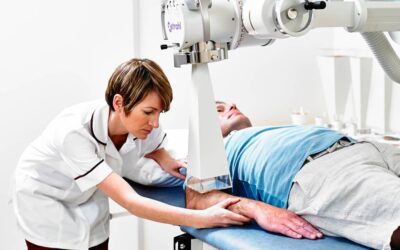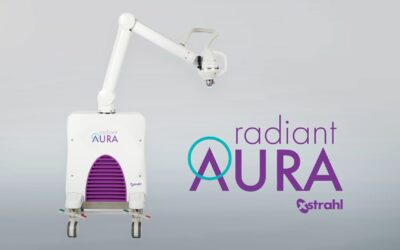Everything we do here at Xstrahl is made possible by our highly skilled and helpful staff. Our research customers continue to speak highly of the application and technical support they receive, and how it’s a key piece of making their research successful. It’s our amazing staff that makes SARRP the technology of choice for preclinical radiation research and the most widely used system in published studies about image-guided radiation. One person making this happen is Merle Reinhart, who joined Xstrahl in 2019.
Merle received her bachelor’s and master’s degrees in physics at Heidelberg University. Her PhD and postdoctoral research were done at the UK Institute of Cancer Research, focusing on the µIMRT framework for small animal irradiation. During this time, she collaborated with Xstrahl by evaluating the SARRP commissioning procedure and tissue segmentation. She is an award-winning, published researcher, and an incredible addition to the Xstrahl team.
What do you do, in and out of Xstrahl?
My background is in physics, particularly medical physics. I did my PhD & postdoctoral work with the SARRP system. My focus was on coming up with a way to do IMRT on the SARRP.
Here at Xstrahl, I’m in the research and development department, and I work on applications. My work involves everything from product development and coding, to scientific support and collaborations.
Outside of Xstrahl, I have a lot of hobbies that keep me busy. Pre-quarantine, these primarily were Argentine tango, triathlons, and rock climbing. At the moment with things still restricted, my hobbies have toned down a little to yoga, cooking and baking.
Why did you leave your old company to join Xstrahl?
After over a decade of academia, I was ready to take my knowledge and skills into a different context. With my background, Xstrahl was the perfect fit.
What motivates you to work here?
I’m mostly motivated by the impact our work has on the wonderful research our customers are doing to help eradicate cancer. I’m also lucky to have amazing colleagues here at Xstrahl.
What is the most positive experience you’ve had here and why?
At the last Xstrahl user meeting, it was so meaningful to hear about all of the great research that people are doing with Xstrahl equipment. It was a clear moment of realizing how much this work matters. One piece of research presented at the last user meeting in Manchester that comes to mind is the work done in Oxford to create a high throughput MR-IGRT protocol. The incredibly sophisticated workflow is impressive and really represents how SARRP can mimic clinical practice. The diversity of research done on the SARRP is fascinating. It’s so interdisciplinary, there are great studies from physics, engineering, biology, medicine, and pharmacology.
What continues to excite you most about our mission?
All I can say is, “What’s not exciting about helping to eradicate cancer?”







